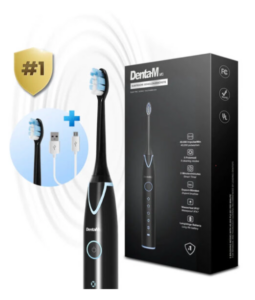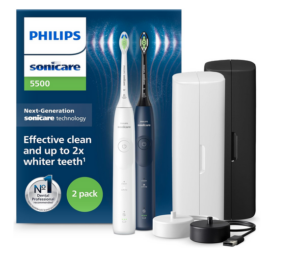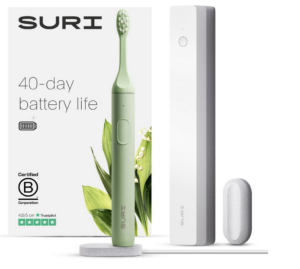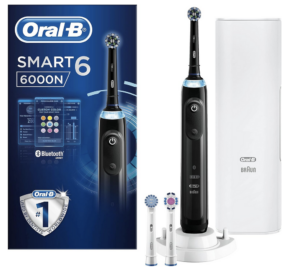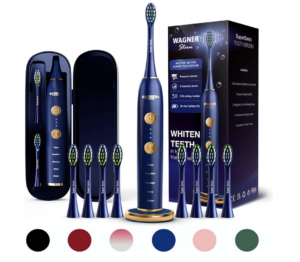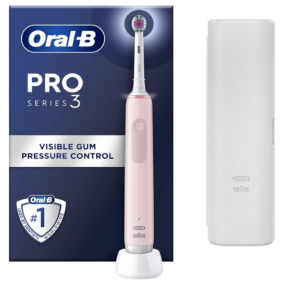UK’s best electric toothbrushes of 2025 tried and tested, including Philips, Oral B and Spotlight

Most people think all toothbrushes do the same job. They don’t. What if the toothbrush you use every day isn’t just ineffective—but slowly damaging your teeth?
We’ve seen it happen too often: people trusting the wrong electric toothbrush and paying the price later—plaque build-up, bleeding gums, expensive treatments, even early tooth loss. And the worst part? Many of these issues are preventable. That’s exactly why we launched one of the largest official electric toothbrush tests ever conducted in the UK.
With a team of over 50 independent testers, our organization has thoroughly reviewed more than 100 different models—from budget options to premium brands. The goal? To uncover which brushes actually protect your teeth and gums long-term—and which ones just make big promises. If you think all electric toothbrushes are the same, you’re about to be surprised.
In this comprehensive test report, we’ll reveal:
-
Which technologies truly make a difference
-
Which toothbrushes failed basic performance checks
-
And which model is our clear winner for 2025—based on real-world results, not marketing hype
🦷 Don’t risk your dental health. Start reading now and find out which toothbrush could actually save you a fortune at the dentist.
Why Should You Use an Electric Sonic Toothbrush?
An electric sonic toothbrush offers many advantages over traditional manual toothbrushes and even standard rotating electric toothbrushes.
1. More Effective Cleaning
- Sonic toothbrushes generate up to 62,000 movements per minute (depending on the model), ensuring thorough plaque and bacteria removal.
- The sonic waves create a dynamic fluid movement, reaching deep between teeth—even where bristles can’t reach.
2. Gentle on Teeth & Gums
- Thanks to their gentle vibrations, sonic toothbrushes are especially suitable for sensitive gums, reducing gum bleeding and irritation.
- Ideal for people with receding gums or sensitive teeth.
3. Supports an Optimal Brushing Routine
- Many models feature a 2-minute timer with 30-second intervals, ensuring even cleaning across all areas of the mouth.
- Various cleaning modes allow customization (e.g., a sensitive mode for delicate gums).
4. Reduces Stains & Plaque Build-up
- The high-speed vibrations help remove surface stains, making teeth appear whiter over time.
- Regular use can lower the risk of cavities and tartar build-up.
What to Consider When Buying a Sonic Toothbrush?
When choosing an electric sonic toothbrush, consider the following key aspects:
1. Vibration Speed (Sonic Frequency)
- The higher the vibrations per minute, the more effective the cleaning.
- Recommended: 30,000 – 62,000 movements per minute for optimal results.
2. Battery Life & Charging Functionality
- Long battery life of at least 2–4 weeks is ideal, especially for travel.
- USB or inductive charging makes recharging more convenient.
3. Cleaning Modes
- A standard cleaning mode should be available. Other useful modes:
Sensitive mode: Gentle cleaning for sensitive teeth and gums
Gum care mode: Soft massage for gum health
Whitening mode: Helps remove stains for brighter teeth
4. Timer & Pressure Sensor
- A 2-minute timer with 30-second intervals helps maintain the recommended brushing duration.
- A pressure sensor prevents excessive force, protecting gums.
5. Brush Head Compatibility
- Ensure the toothbrush supports a variety of replacement brush heads, such as:
Standard brush heads
Sensitive brush heads for gentle cleaning
Whitening brush heads for stain removal
6. Noise Level & Handling
- Some models are quite loud—a quiet motor is preferable for daily use.
- Ergonomic design & lightweight construction enhance comfort.
7. Additional Features
- Bluetooth & App connectivity for smart brushing analysis (not essential, but a plus).
- UV sanitation for hygienic brush head cleaning.
8. Price-to-Performance Ratio
- Budget models start at $30–$50, but often have fewer features.
- Mid-range models ($80–$150) offer more modes & longer battery life.
- Premium models ($150–$300) include smart features, multiple modes & app integration.
How to Use a Sonic Toothbrush Properly?
Using a sonic toothbrush differs slightly from brushing with a manual toothbrush or a rotating electric toothbrush.
1. Apply Toothpaste
- A pea-sized amount of toothpaste is sufficient.
- Avoid using abrasive toothpaste with large particles.
2. Position the Brush Correctly
- Hold the brush at a 45-degree angle against the gum line.
- No need to apply pressure! The sonic toothbrush cleans through its vibrations—too much pressure may damage gums.
3. Move the Brush Slowly from Tooth to Tooth
- Spend about 3–5 seconds on each tooth.
- Let the brush glide naturally over the teeth without excessive movement.
4. Follow the Timer Guidelines
- Most sonic toothbrushes feature a 2-minute timer with 30-second intervals.
- Switch mouth areas every 30 seconds (upper right, upper left, lower right, lower left).
5. Clean the Tongue & Mouth
- Some models offer special tongue-cleaning attachments or extra-soft bristles for tongue and cheek cleaning.
6. After Brushing
- Rinse the brush head thoroughly with water.
- Store upright to allow proper drying.

 1st
1st